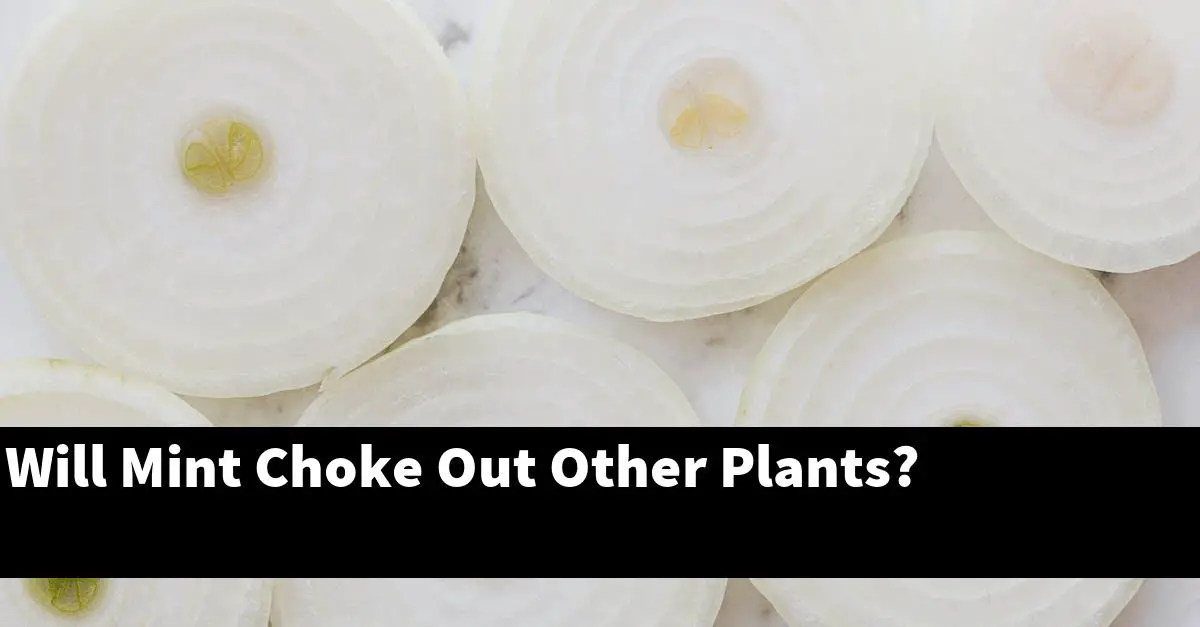Mint is a popular herb that is used in many dishes and drinks. However, mint can also be very invasive, crowding out other plants in the garden.
If you’re not careful, mint can quickly take over your entire garden!
How do you keep mint runners from spreading?
Mint runners can be a problem in any indoor setting where plants are grown. The problem is caused when the mints produce asexually reproduced flowers, which then grow and produce more flowers.
The mints spread quickly, and the flowers produce a minty odor that can be very unpleasant. There are several ways to avoid or control mint runners.
One is to use barrier plants around the plants that will prevent the mints from growing. Another is to water the plants sparingly, since water will help to spread the plants.
Finally, it is important to remove the flowers when they are mature, since they will produce more runners.
Is it possible to kill mint?
It depends on the specific mint and the methods used to kill it. However, generally speaking, it is not possible to kill mint outright.
Rather, it will need to be killed by either the plant’s natural enemies or by chemical means.
What plants do not grow well with mint?
Mint is a member of the Lamiaceae family, which includes many plants that are not well-suited for growing in close proximity to mint, such as rosemary, lavender, and thyme. Because mint is a vigorous grower, it can outcompete these other plants, reducing their growth and fertility.
Additionally, mint is a common weed in many gardens, and can actively damage plants that it grows near.
How do i stop mint spreading in my garden?
Mint is a common weed in gardens and yards, and can quickly spread to dominate other plants. There are many methods for controlling mint, but the most effective is to use a herbicide that is specifically designed to kill mint.
Can you grow mint from cuttings?
Yes, mint can be grown from cuttings taken from healthy plants. Some methods used to propagate mint include rooting cuttings in water, rooting cuttings in soil, and grafting.
Does mint attract bugs?
Mint is a plant and has a variety of different chemicals that attract bugs. Some of these chemicals are the same as those that attract pollinators, such as nectar and pollen.
Some of the chemicals in mint also make the plant look appetizing to bugs.
What is wrong with my mint plant?
There could be a few reasons why your mint plant might be struggling. The most common issue is rooted problems, which can be caused by a number of things like poor drainage, an over-zealous watering schedule, or a lack of nutrients.
If the plant is struggling to get enough water, the leaves might start to droop and the plant might start to develop brown patches on the leaves. If the plant is getting too much water, the leaves might turn yellow and the plant might start to produce molds or fungus.
If the plant is struggling with nutrients, the leaves might start to turn yellow and the plant might start to produce distorted leaves. If you notice any of these signs, it’s important to take your mint plant to a qualified plant specialist for a proper diagnosis.
What can you plant with mint?
Mint is a perennial herb that can be planted in a variety of locations. Some of the best places to plant mint include in a garden or in pots on a porch or patio.
Mint can also be planted in the ground. When planting mint, make sure to prepare the soil before planting.
Mint prefers fertile, moist soil. When planting mint, be sure to water it regularly.
What to do with overgrown mint?
If you have an overgrown mint plant, there are a few things that you can do to help manage the plant. One option is to trim the plant back to the desired height and remove any dead or dying plants.
You can also try spraying the plant with a solution of water and vinegar, or spraying the plant with a diluted solution of a herbicide.
3 Best way to remove mint from garden
Mint is a perennial herbaceous plant that typically grows to 1.5 m in height. It has a branching stem and opposite leaves.
The leaves are ovate, crenate and have a serrated margin. The flowers are small and white and the fruit is a capsule.
There are three main ways to remove mint from a garden:
1. Cut the stems at the base of the plant and pull the plant out.
2. Cut off the top of the plant and pull it out.
3. Cut the stem below the leaves and pull the plant out.
How do you stop mint from spreading?
Mint can spread rapidly when it is planted in new soil, and it can be difficult to stop the spread. One way to prevent or slow the spread of mint is to cut down the plants or to dig up the plants and remove the roots.
Conclusion
Mint is a very aggressive plant and will quickly take over an area if left unchecked. It can choke out other plants by crowding them out and preventing them from getting the light and nutrients they need to survive.
If you want to grow mint, it’s best to keep it in a pot or container so that it doesn’t have the opportunity to spread.

